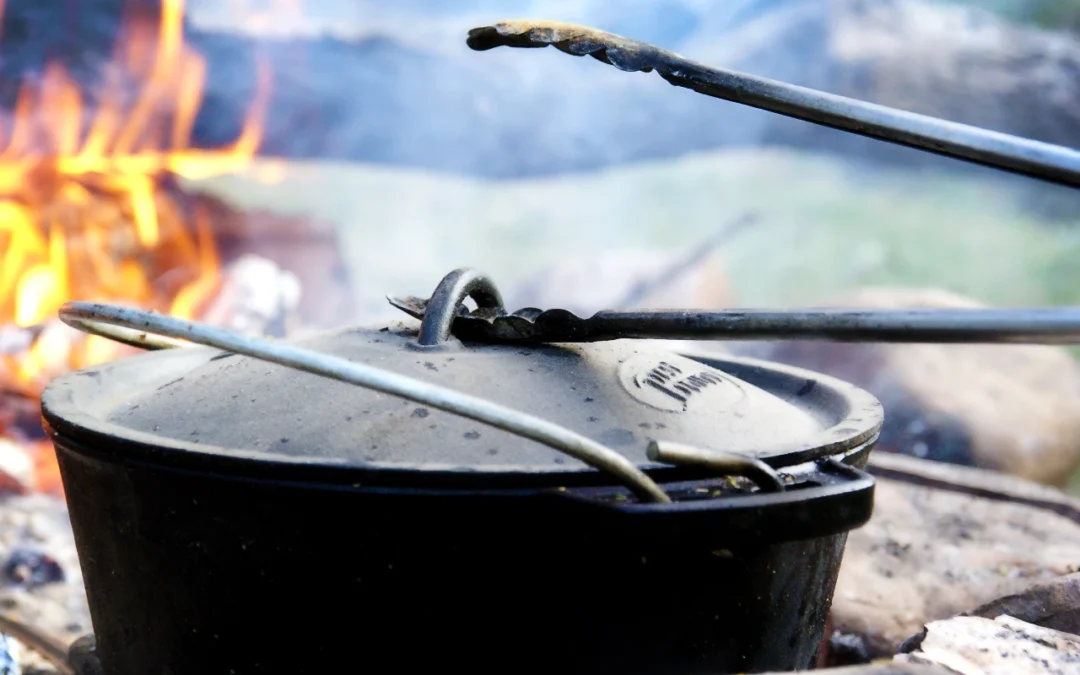Exploring the rich history, diverse flavors, and essential ingredients of a traditional South African dish, the Classic Beef Potjie, along with step-by-step instructions and tips for perfecting and enjoying this hearty and communal meal. Buy your potjie now.
Exploring the Rich History and Flavor of Beef Potjie
Looking into the culinary traditions of South Africa, the enduring legacy of potjiekos, a term that embodies the essence of communal dining and rich, slow-cooked meals. Originating during the epic journey of the Voortrekkers across the African continent, potjiekos has evolved from a practical cooking method to a cultural phenomenon deeply ingrained in South African heritage. It is a slow-cooked stew made in a cast-iron pot over a fire or gas burner. This unique cooking technique, utilizing a cast-iron pot known as a ‘potjie,’ transcends the mere act of preparing food, symbolizing an ethos of unity, togetherness, and the communal joy of sharing a hearty meal with loved ones. It is a testament to the spirit of camaraderie that prevails during these gatherings, where stories are exchanged, and bonds are strengthened over delicious, simmering stews.
Throughout the vast and varied landscapes of South Africa, potjiekos has taken on numerous forms, each reflecting the rich tapestry of flavors and ingredients characteristic of its region. From the coastal areas where seafood variants abound, to the bushveld where game meats introduce an exotic twist, the diversity of potjiekos recipes showcases the culinary creativity and resourcefulness of the South African people. This adaptation and innovation ensure that potjiekos remains a beloved and quintessential element of South African cuisine, celebrated across generations and communities for its ability to bring people together in appreciation of good food and good company.
Essential Ingredients for a Classic Beef Potjie
A classic beef potjie, revered for its savory depth and hearty warmth, starts with a base of quality beef cuts, often complemented by a medley of root vegetables such as potatoes, carrots, and onions. This foundational mixture sets the stage for a culinary exploration where the traditional meets the innovative. To infuse the stew with distinct flavors and textures, chefs and home cooks alike might incorporate unexpected ingredients like apricots or prunes, lending a subtle sweetness that contrasts beautifully with the savory beef. Biltong, a type of dried, cured meat, is another popular addition, introducing a unique South African twist that enhances the dish’s complexity and connection to its cultural roots.
Spices play a pivotal role in transforming the potjie from a simple stew to a rich tapestry of flavors. Essentials such as coriander, cumin, and paprika are liberally used not only to season the meat but also to impart warmth and depth to the broth. For those seeking to push the boundaries of tradition, experimenting with alternative meats can offer a delightful divergence from the norm. Choices might range from the gelatinous richness of beef shin or the succulence of oxtail, to more exotic options like kudu or ostrich, each bringing its own set of flavors and textures to the pot. Such variations not only pay homage to the dish’s flexible nature but also celebrate the diverse palate of South African cuisine.
Preparing Your Potjie: Step-by-Step
Embarking on the preparation of a beef potjie is akin to painting a culinary masterpiece, where every layer contributes to the final flavor profile. The process begins with the searing of the beef, which is crucial for adding depth and richness to the dish. Following the meat, vegetables such as carrots, potatoes, and mushrooms are layered according to their cooking times, with those requiring longer cooking at the bottom, closest to the heat source. This meticulous arrangement ensures that each ingredient cooks perfectly, retaining its texture and contributing its unique flavor to the potjie. To enrich the stew, liquids like broth, wine, or even beer are gently poured over the assembled layers, providing moisture and facilitating the melding of flavors under the slow cooking process.
In embracing the tradition of potjiekos, it’s important to remember its roots in outdoor cooking, where it was prepared over an open flame, giving it a distinctive smoky flavor. However, the versatility of potjiekos today means it can also be prepared on a stovetop, broadening its appeal and allowing for year-round enjoyment regardless of weather. A fundamental tenet of potjie preparation is the practice of not stirring the pot once the layering is complete. This patience-testing step is critical as it allows the ingredients to cook in their own juices, with the flavors developing complexity and depth as they slowly infuse throughout the cooking process. This method not only preserves the individual integrity of each component but also creates a harmonious blend of tastes that is the hallmark of an authentic potjiekos.
Cooking Techniques and Times
The art of making a perfect potjiekos lies not only in the ingredients but also in mastering the cooking techniques and understanding the importance of time. The slow cooking process is fundamental, as it allows the ingredients to simmer gently, melding the flavors together into a deeply satisfying stew. This method is what gives potjiekos its distinctive taste and texture, with each component retaining its integrity while contributing to the overall flavor profile of the dish. Typically, the cooking time for a classic beef potjie ranges from 2.5 to 3.5 hours, although this can vary depending on the meat’s cut and the pot’s size. It’s this slow simmering that tenderizes the beef, ensuring it falls apart at the slightest touch.
The design of the potjie pot is crucial in achieving the perfect cook. Resembling a traditional Dutch oven, its heavy cast iron construction and rounded shape allow for even heat distribution, minimizing the chances of hot spots and ensuring that every ingredient cooks evenly. This means that regardless of whether the potjie is nestled over coals or perched on a gas burner, the heat circulates throughout the pot, cooking the contents uniformly. Patience is indeed a virtue, as rushing the process can lead to undercooked ingredients or, worse, a burnt stew. By allowing the potjie to cook slowly, covered, over a low heat, one ensures that the flavors have ample time to develop and infuse, creating a dish that is not only hearty but also rich in taste and aroma.
Tips for Perfecting Your Potjie
Mastering the art of making a potjie requires patience, but with a few expert tips, you can take this already delicious dish to the next level. To begin with, incorporating a dash of Worcestershire sauce or soy sauce into your potjie can significantly elevate its flavor. The umami quality of these sauces harmonizes beautifully with the richness of the meat and the earthiness of the vegetables, creating a more complex and satisfying dish. It’s a simple addition that can make a world of difference in the overall taste.
The technique of deglazing the pot with a bit of red wine before adding the rest of your ingredients is a chef’s secret that can add an incredible depth of flavor to your potjie. This process not only helps to lift any bits stuck to the bottom of the pot, adding to the dish’s flavor profile, but also integrates the rich, fruity notes of the wine into the potjie, making each bite a delightful experience. To complement the potjie’s richness and round off the meal, serving it with a side of chakalaka is highly recommended. This spicy vegetable relish not only adds a vibrant color contrast but also introduces a welcome heat that cuts through the dish’s richness, making each spoonful perfectly balanced.
Serving and Enjoying Your Beef Potjie
Traditionally, potjiekos is served family-style, straight from the pot, allowing everyone to share in the communal experience. However, for a more formal presentation, individual portions can also be plated. The beauty of potjiekos lies in its versatility, with leftovers often tasting even better the next day as the flavors continue to meld. Creative leftovers recipes, such as potjie pies or potjie-stuffed pastries, offer new ways to savor this traditional South African dish.
The beef potjie is a testament to the rich culinary heritage of South Africa, embodying the spirit of togetherness and the joy of sharing a delicious, home-cooked meal. Whether adhering strictly to traditional recipes or experimenting with unique ingredients, the potjie remains a beloved dish for feeding a crowd on special occasions and bringing warmth and flavor to any gathering.


